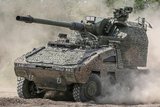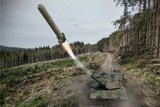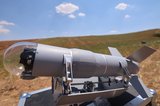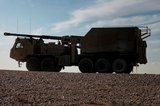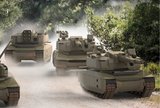British NATO troops to show post-Brexit 'commitment'
A convoy of British troops landed in The Netherlands on Wednesday en route to NATO's largest exercise since the Cold War, pledging London's commitment to defend the continent despite Brexit.
The contingent of some 150 soldiers on board 71 military vehicles rolled off a civilian passenger ferry in the Hook of Holland port after travelling overnight from Harwich.
They are embarking on the first leg of a trip through northern Europe to Norway for NATO's Trident Juncture exercise, which is designed to show Russia the alliance is ready to repel any attack.
‘The road trip is really important’, British army spokesman Major Stuart Lavery told AFP.
‘This is about the British military showing in a post-Brexit world that we're still committed to Europe and to NATO,’ he added.
‘We're absolutely committed that in a year's time we'll still be able to do this, so this (Brexit) won't make any difference. We're getting ready for it now.’
Britain voted to leave the European Union in 2016 and is set to depart in March 2019, depriving the bloc of one of its biggest military powers.
Brussels and London are desperately trying to hammer out a deal on the terms of the divorce, including future cooperation on defence and security issues.
Britain, however, remains a part of the 29-nation, US-led NATO military alliance.
Lavery said the British convoy's journey through the Netherlands, Germany, Denmark and Sweden ‘demonstrates... to our NATO allies that the British army is prepared to move across Europe when needed and to show that we have the capability to do so.’
The British troops will test how fast and well army personnel and machines can move between NATO partner countries, Lavery said.
The Trident Juncture exercise will see some 50,000 troops deploy into the first snows of a Norwegian winter.
It will be the biggest such movement of NATO personnel and vehicles since at least the 1991 collapse of the Soviet Union, although smaller than the
Vostok-18 exercise staged by Russia and China last month.
The Western allies have stepped up their military posture, with rotating garrisons in eastern Europe and the Baltic States in the four years since Russia annexed the Ukrainian region of Crimea.
A NATO official who asked not to be named told AFP that the exercise ‘is focused on conventional warfare.’
‘During the Cold War, the border was between West and East Germany. Everybody knew where to go and what their roles were,’ he said.
The British road mobility part of the exercise ‘will help us establish new strategic points,’ such as where to find fuel and test infrastructure's ability to withstand rapid troop movements, the official said.
More from Land Warfare
-
![Dedicated drone munitions could unlock modular mission potential]()
Dedicated drone munitions could unlock modular mission potential
Top attacks have proven effective against heavily armoured vehicles in Ukraine. A new family of uncrewed aerial system-delivered munitions is looking to press that advantage further.
-
![Elbit bets on local content for US howitzer bid as it faces off against popular systems]()
Elbit bets on local content for US howitzer bid as it faces off against popular systems
The Israeli company hopes that producing its Sigma artillery system wholly in the US will help it win a key US Army contract, but it will be up against the popular CAESAR Mk II wheeled weapon and the K9 tracked.
-
![Rheinmetall and KNDS tank tie-up narrows trans-European options]()
Rheinmetall and KNDS tank tie-up narrows trans-European options
The French and German governments signed an agreement in June 2018 to cooperate on the development of a new main battle tank under the Main Ground Combat System programme but the effort has struggled. This new agreement may damage it further.








